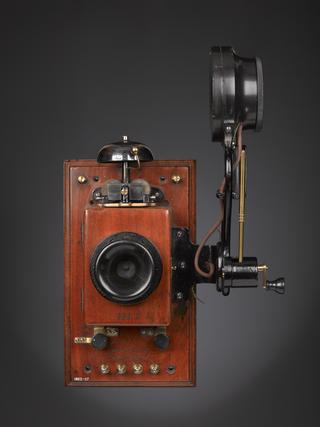
Insulators used for Morse's telegraph, 1835
- Made:
- 1835 in United States
- inventor:
- Samuel Finley Breese Morse






Insulators used for Morse's telegraph, unknown maker, United States, 1835.
Samuel Morse was one of the pioneers of electric telegraphy. Prompted by receiving news of his wife's death too late to attend her funeral, Morse was determined to improve the speed of long distance communications (which at that point relied on horse messengers). Morse invented an instrument that used a current to displace an electro-magnet, which moved a marker, therefore recording the breaks in the current - the invention of Morse Code. At the same time, Cooke and Wheatstone were working on their own electric telegraph in England. Although Morse claimed to conceive the idea earlier, Cooke and Wheatstone were in 1837 the first in the world to patent an electric telegraph system. Morse maintained that he was the true inventor of the electric telegraph, as only his instruments were able to record messages as well as receive them. He asserted that Cooke and Wheatstone's instruments were merely electrical semaphores. These insulators are believed to be from Morse's original instrument.
Details
- Category:
- Telecommunications
- Object Number:
- 1894-280
- Materials:
- ceramic (unspecified) and cotton (fibre)
- Measurements:
-
overall: 40 mm x 10 mm diameter, 6 g
- type:
- insulator
- credit:
- Donated by H.M. Postmaster General




